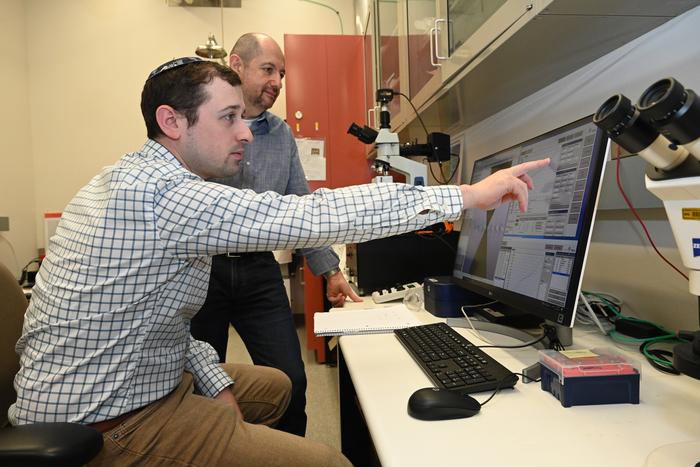A conserved stress response mechanism leads to BRAF inhibitor resistance through AP-1 activation
TAMPA, Fla. – Melanoma is one of the most aggressive types of skin cancer, but recent advances in targeted therapies have improved the prognosis for many patients. Unfortunately, for some patients these positive outcomes are not long lasting, due to the development of drug resistance and tumor recurrence. Moffitt Cancer Center researchers have discovered a mechanism by which melanoma cells become resistant to the commonly used drugs that target the BRAF protein and its signaling pathway. Their study was published online today by the journal Cancer Research.
One of the most common genetic mutations found in melanoma is alteration of the BRAF gene. Mutations in BRAF are found in approximately 50 percent of all melanomas, leading to increased cell proliferation and survival. Several drugs are available that target BRAF and a downstream gene named MEK that cooperates with BRAF in cancer development. These drugs have resulted in significant improvements in patient outcomes; however, many patients eventually develop drug resistance.
Moffitt researchers conducted a series of laboratory experiments with cell lines and mouse models to determine how melanoma becomes resistant to these commonly used drugs. They discovered that melanoma cells that are resistant to BRAF inhibitors undergo a similar response mechanism as cells treated with stress-inducing factors, such as UV radiation and low oxygen. During each of these conditions, the cells increased expression of the protein histone deacetylase 8 (HDAC8).
HDACs are proteins that regulate the expression level and activity of other proteins within the cell. HDACs are often deregulated in cancer and several drugs that target HDACs are approved for the treatment of different types of cancer. The researchers found that HDAC8 stimulated the activity of the AP-1 transcription factor that subsequently increased the expression of genes that are involved in cell motility and invasion.
“Our work provides the first evidence that HDAC8 activity is increased in responses to multiple, diverse cellular stresses, and that this in turn initiates a transcriptional program that is associated with increased melanoma cell survival,” explained Keiran Smalley, Ph.D., director of the Donald A. Adams Melanoma and Skin Cancer Center of Excellence at Moffitt.
This link between HDAC8 and drug resistance suggested to the researchers that drugs targeting HDACs may be able to overcome cellular resistance mechanisms to BRAF inhibitors. The researchers performed a series of mouse experiments and found that co-treatment with both HDAC and BRAF inhibitors inhibited melanoma tumor growth better than either agent alone.
The researchers hope their work will lead to clinical studies that will examine the potential of HDAC inhibitors to prevent the development of drug resistance in melanoma. “These findings provide a strong rationale to pursue the development of more selective and potent HDAC8 inhibitors for future evaluation as drugs that can limit phenotype switching and therapeutic escape in melanoma,” said Smalley.
###
The study was supported by a SPORE grant from the National Institutes of Health, a Bankhead-Coley Grant from the State of Florida and Forma Therapeutics. There was also support from the Proteomics and Metabolomics Core, the Biostatistics and Bioinformatics Core, the Tissue Core and Flow Cytometry Core facilities at Moffitt.
Moffitt is dedicated to one lifesaving mission: to contribute to the prevention and cure of cancer. The Tampa-based facility is one of only 50 National Cancer Institute-designated Comprehensive Cancer Centers, a distinction that recognizes Moffitt’s scientific excellence, multidisciplinary research, and robust training and education. Moffitt is a Top 10 cancer hospital and has been nationally ranked by U.S. News & World Report since 1999. Moffitt devotes more than 2 million square feet to research and patient care. Moffitt’s expert nursing staff is recognized by the American Nurses Credentialing Center with Magnet® status, its highest distinction. With more than 6,000 team members, Moffitt has an economic impact in the state of $2.5 billion. For more information, call 1-888-MOFFITT (1-888-663-3488), visit MOFFITT.org, and follow the momentum on Facebook, Twitter and YouTube.
Media Contact
Kimberly Polacek
[email protected]
Related Journal Article
https:/
http://dx.





